Introduction
Mode Files are essential for various technical applications, from organizing personal notes to handling data in Python. Whether you’re a tech enthusiast or a professional developer, understanding different Mode Files can greatly enhance your productivity and efficiency. This article dives deep into the world of Mode Files, including popular types like Org Mode Files, Python’s File Mode handling, and more. Let’s get started!
What Are Mode Files?
Mode Files are configurations or settings that dictate how files are read, written, or executed in various software environments. They provide the rules that define the way files interact with applications, making them crucial for tasks ranging from coding to file management.
- Control file behavior in software.
- Enable specific functionalities in programs.
- Enhance user productivity and file management.
- Improve customization and efficiency.
Mode Files can be tailored to specific needs, allowing users to modify software environments to suit their tasks.
Understanding Org Mode Files
Org Mode Files are a piece of important supervisory tool within Emacs, designed for note-taking, project planning, and task management. These files help users streamline their workflows by using plain text files that are very simple to edit and manage.
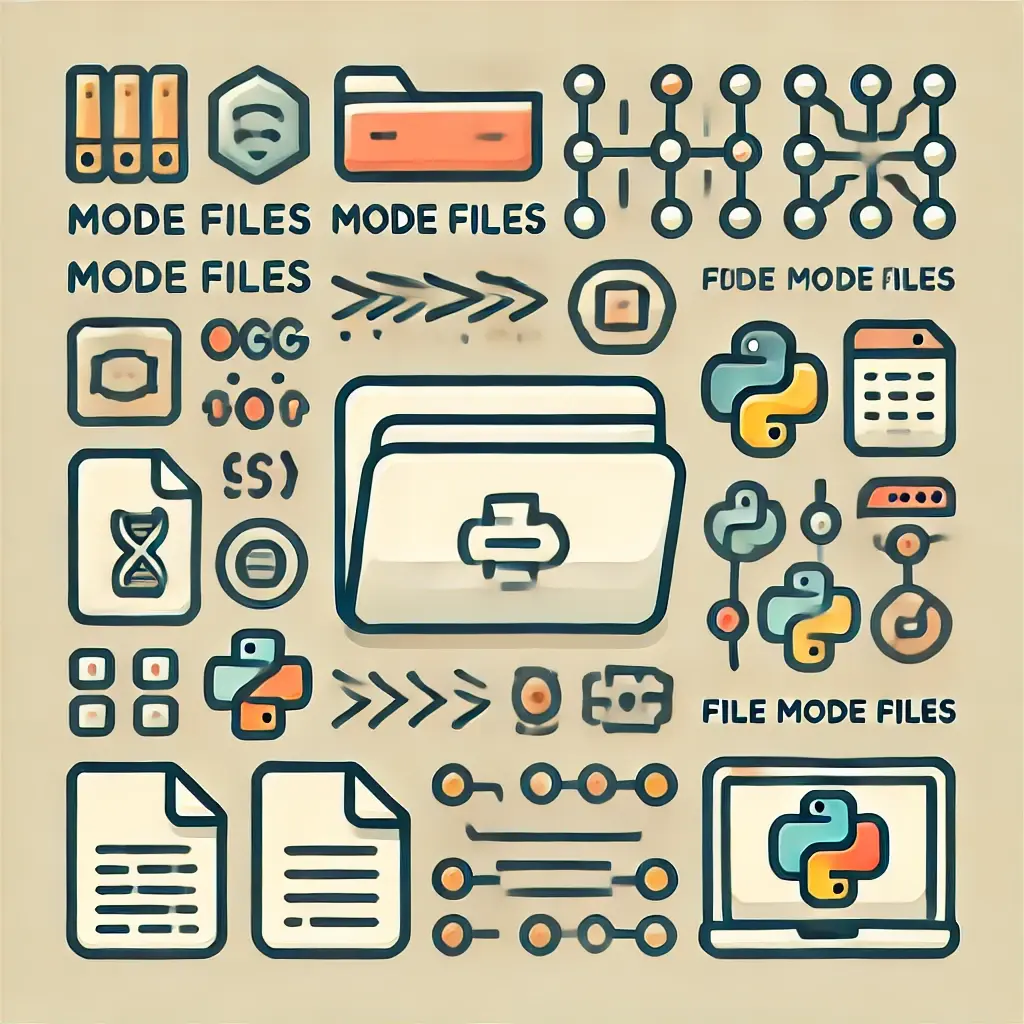
- Store notes, to-dos, and project plans.
- Enable easy searching and tagging of information.
- Simplify complex project management with outlines.
- Provide support for time tracking and deadlines.
With Org Mode Files, managing tasks and information becomes more structured, helping users keep everything in order.
Exploring Org-Mode Files
Org-Mode Files extend the functionalities of Org Mode, adding even more flexibility and customization options. These files allow users to integrate advanced features and commands, tailoring the software to better fit their specific workflow requirements.
- Use custom scripts and commands to automate tasks.
- Integrate with other software like Git and Markdown.
- Customize the appearance and behavior of files.
- Share files across different platforms with ease.
By leveraging Org-Mode Files, users can create a more personalized and powerful organizational system.
How to Install Org Mode in Emacs
Org Mode is a part of Emacs, but if you want the latest version or if it’s not included in your setup, you can install it manually. Here’s how:
Step 1: Open Emacs
Launch Emacs on your computer. If Emacs is not installed, you can download it from the GNU Emacs official website.
Step 2: Access the Package Manager
- Press M-x (Alt + x or Esc + x) to open the command prompt in Emacs.
- Type package-list-packages and press Enter. This will open the package manager.
Step 3: Install Org Mode
- In the package manager, search for “org” by pressing Ctrl + s and typing “org”.
- Highlight the latest version of Org Mode.
- Press i to mark the package for installation.
- Press x to execute the installation.
Step 4: Confirm Installation
To make sure Org Mode is installed accurately, you can look at the version by typing M-x org-version and pressing Enter.
How to Set Up File Handling Modes in Python
Python doesn’t need a particular installation for file-handling modes, but you are required to have Python installed on your system. Here’s how to set up Python for file handling:
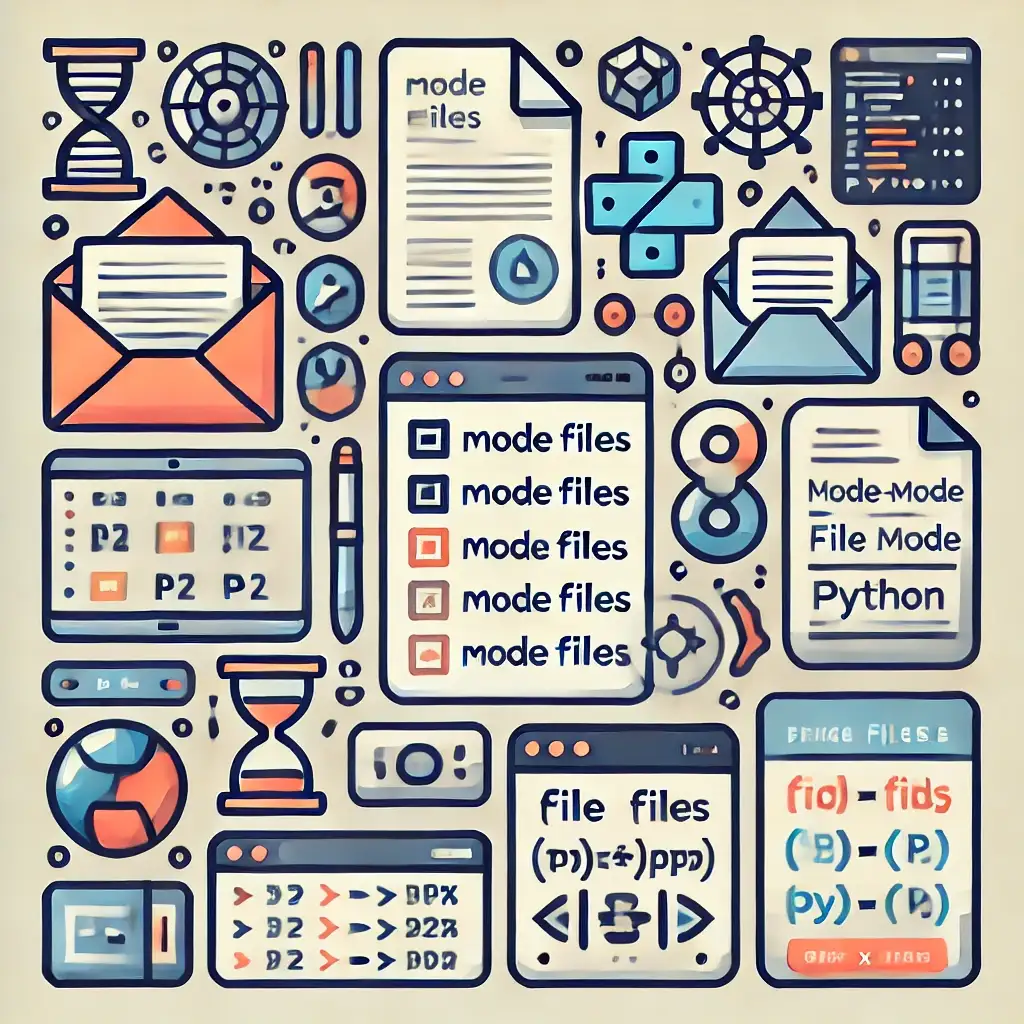
Step 1: Install Python
If Python has not been before installed, download and install it from the official Python website.
Step 2: Verify Python Installation
Open your command line (Command Prompt, Terminal, or Shell) and type:
bashCopy codepython –version
or
bashCopy codepython3 –version
This command will confirm that Python is installed and show the current version.
Step 3: Use File Handling Modes in Your Code
- Open your preferred code editor (VSCode, PyCharm, or even a text editor like Notepad).
- Start a new Python file and use the file handling modes. For example:
pythonCopy codewith open(‘example.txt’, ‘w’) as a file: file.write(‘Hello, Mode Files!’)
- Save the file and run it in your command line by typing:
bashCopy codepython filename.py
Replace filename.py with the name of your Python file.
Step 4: Test Different File Modes
Experiment with different modes (‘r’, ‘w’, ‘a’, etc.) by changing the code to see how each mode affects file handling.
By following these steps, you can get Org Mode up and running in Emacs and begin exploring Python’s file-handling capabilities efficiently!
File Mode Python
In Python, File Modes determine how files are accessed and manipulated. These modes define actions like reading, writing, or appending data to files, making them critical for managing data in Python applications.
- ‘r’ for reading files.
- ‘w’ for writing files, which overwrites existing content.
- ‘a’ for appending data to existing files.
- ‘rb’ and ‘wb’ for handling binary files.
Conception and using these File Modes in Python permit developers to successfully manage the files, making sure data is handled correctly and skillfully.
In Python, file modes are utilized to particular the operations that may work on a file when it is unlocked. These modes control if the file is unlocked for reading, writing, adding, or working with binary operations. Here’s a detailed look at the different file modes available in Python:
Python File Modes Explained
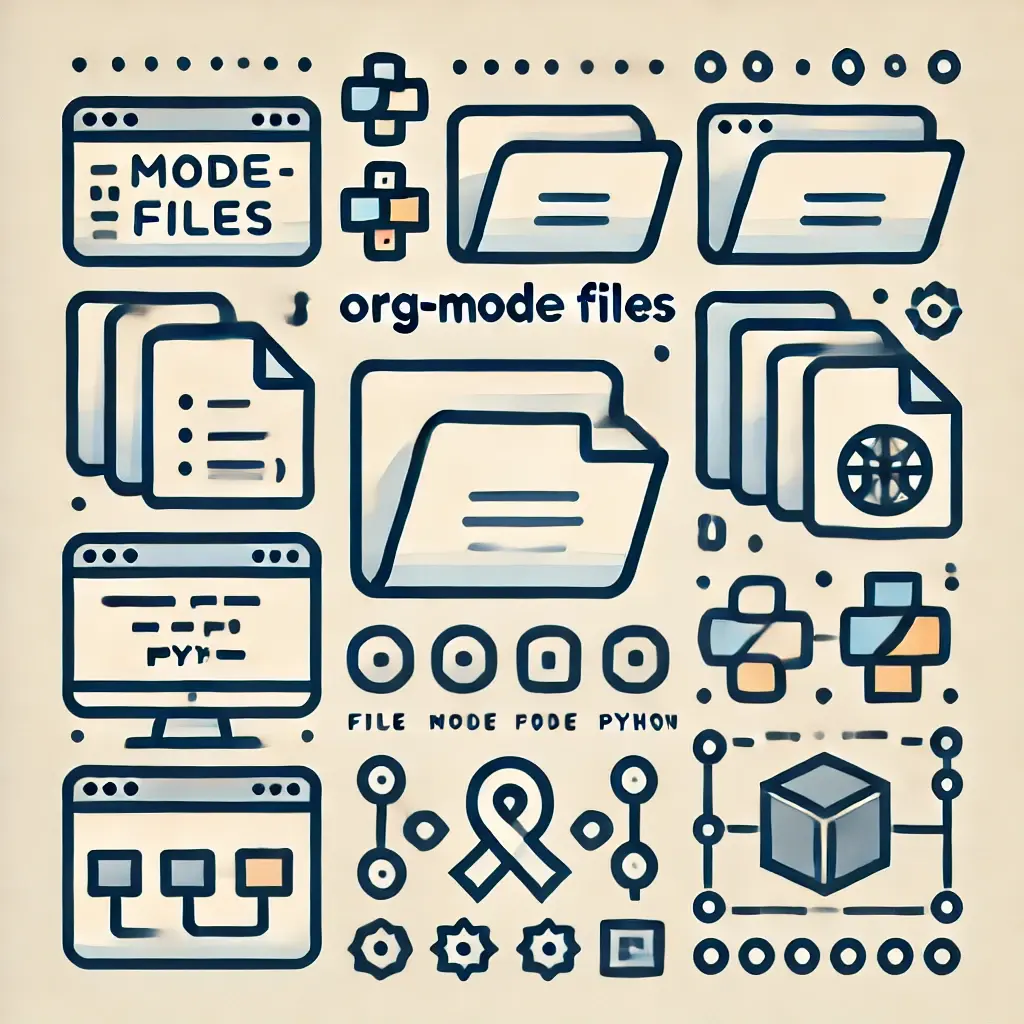
1. Read Mode (‘r’)
- Description: Opens a file for reading only. This is the default mode if no mode is identified.
- Behavior: The file pointer is placed at the beginning of the file.
- Usage: Utilize this mode when you require to read data from a file but do not wish to make any changes to it.
- Example:
pythonCopy codewith open(‘example.txt’, ‘r’) as file: content = file.read() print(content)
- Important Note: If the file does not live, a mistake will happen.
2. Write Mode (‘w’)
- Description: looking up a file for writing. If the file on live, it will be reduced to zero length (i.e., erased). If the file does not live, it makes a new file.
- Behavior: The file pointer is placed at the beginning of the file.
- Usage: Use this mode to overwrite existing data or to create a new file with fresh content.
- Example:
pythonCopy codewith open(‘example.txt’, ‘w’) as file: file.write(‘This will overwrite any existing content.’)
3. Append Mode (‘a’)
- Description: Look up a file for adding data at the end. If the file does not live, it makes a new file.
- Behavior: The file pointer is put at the end of the file.
- Usage: Use this mode to add new content without deleting existing data.
- Example:
pythonCopy codewith open(‘example.txt’, ‘a’) as file: file.write(‘This will add content to the end of the file.’)
4. Read and Write Mode (‘r+’)
- Description: Opens a file for both reading and writing. The file must already exist.
- Behavior: The file pointer is placed at the beginning of the file.
- Usage: Use this mode when you need to both read from and write to a file.
- Example:
pythonCopy codewith open(‘example.txt’, ‘r+’) as file: file.write(‘New text’) # Overwrites the beginning of the file file.seek(0) print(file.read())
5. Write and Read Mode (‘w+’)
- Description: Look up a file for both writing and reading. If the file exists, it will be reduced to zero length. If the file does not exist, it creates a new file.
- Behavior: The file pointer is placed at the beginning of the file.
- Usage: Use this mode when you want to start fresh and need both reading and writing access.
- Example:
pythonCopy codewith open(‘example.txt’, ‘w+’) as file: file.write(‘Fresh content’) file.seek(0) print(file.read())
6. Append and Read Mode (‘a+’)
- Description: Unlock a file for both appending and reading. If the file does not live, it makes a new file.
- Behavior: The file pointer is put at the end of the file.
- Usage: Use this mode when you need to add data and also have the ability to read from the file.
- Example:
pythonCopy codewith open(‘example.txt’, ‘a+’) as file: file.write(‘\nAppending new data.’) file.seek(0) print(file.read())
7. Exclusive Creation Mode (‘x’)
- Description: Opens a file for exclusive creation. If the file already exists, the operation fails.
- Behavior: The file pointer is placed at the beginning of the new file.
- Usage: Use this mode to ensure you only create a new file if it does not exist, preventing overwriting.
- Example:
pythonCopy codewith open(‘example_new.txt’, ‘x’) as file: file.write(‘This file is newly created and must not exist before.’)
8. Binary Modes (‘b’)
- Description: Opens a file in binary mode. This can be combined with other modes like ‘rb’, ‘wb’, ‘ab’, etc.
- Behavior: Works with non-text files such as images or executables.
- Usage: Use binary mode when dealing with binary files to prevent encoding issues.
- Example:
pythonCopy codewith open(‘example_image.png’, ‘rb’) as file: data = file.read()
9. Text Modes (‘t’)
- Description: Opens a file in text mode, which is the default. This mode can be combined with other modes like ‘rt’, ‘wt’, ‘at’, etc.
- Behavior: Works with text files and handles encoding (UTF-8 by default).
- Usage: Utilize this mode for reading and writing text files to make sure real handling of line endings and encodings.
Understanding these file modes in Python allows you to control how files are accessed, read, and modified, ensuring your program interacts with files in the intended manner.
File Handling Modes in Python
Python provides multiple file-handling modes that give developers control over how files are accessed and modified. Knowing which mode to use is essential for coding efficiency and data management.
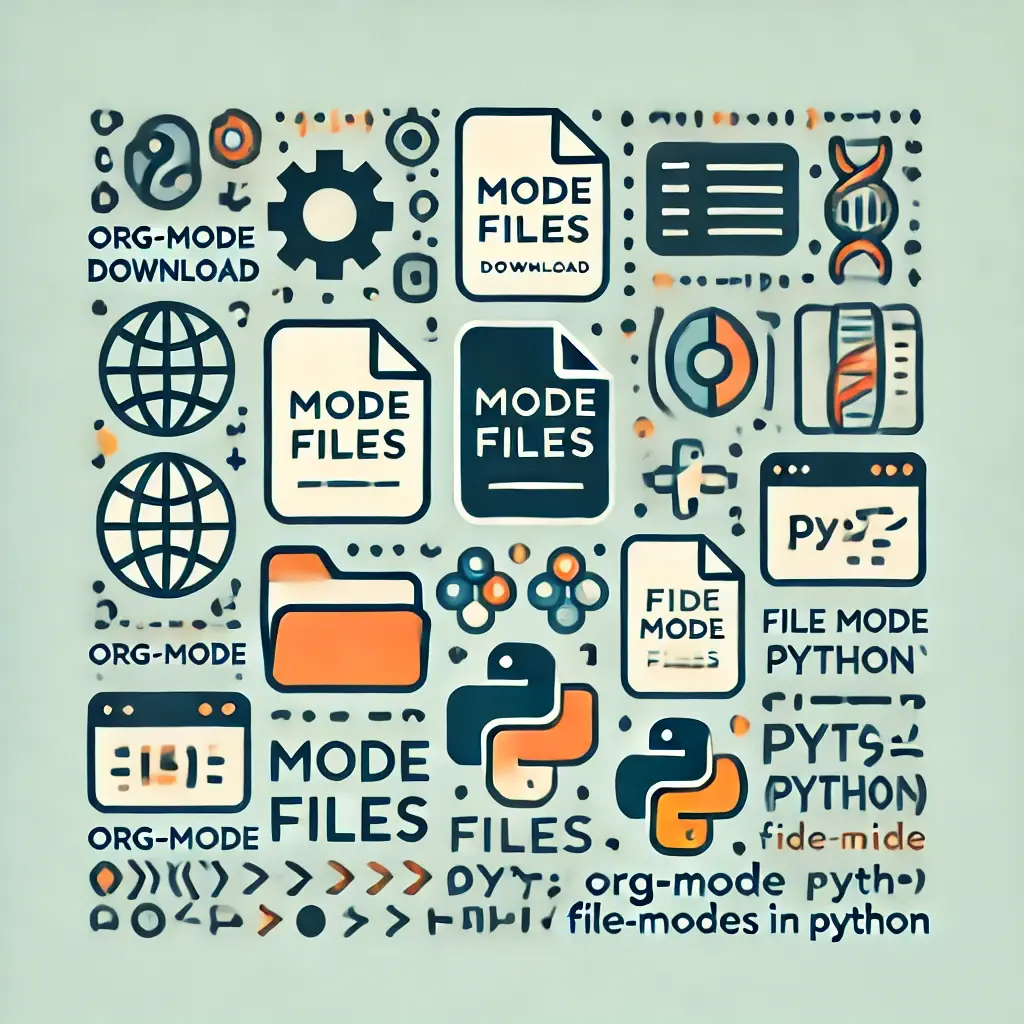
- ‘r+’ for reading and writing without overwriting.
- ‘w+’ for reading and writing with overwriting.
- ‘a+’ for reading and appending.
- ‘x’ is used to create a new file, failing if the file exists.
Mastering these File Handling Modes ensures developers can manage files in Python with precision, avoiding errors and data loss.
Benefits of Using Mode Files
Using Mode Files across different applications provides numerous advantages, particularly for developers and tech enthusiasts. By understanding and leveraging these files, users can achieve greater control and customization in their work.
- Enhance productivity by customizing workflows.
- Improve file management with tailored settings.
- Increase software efficiency with optimized file behavior.
- Enable advanced features and integrations.
These benefits highlight the importance of Mode Files in enhancing both personal and professional computing environments.
Mode Files Download
Finding and downloading the correct Mode Files can significantly improve your software’s performance and usability. Many platforms provide Mode Files for download, each tailored to different environments like text editors, IDEs, or specific programming languages.
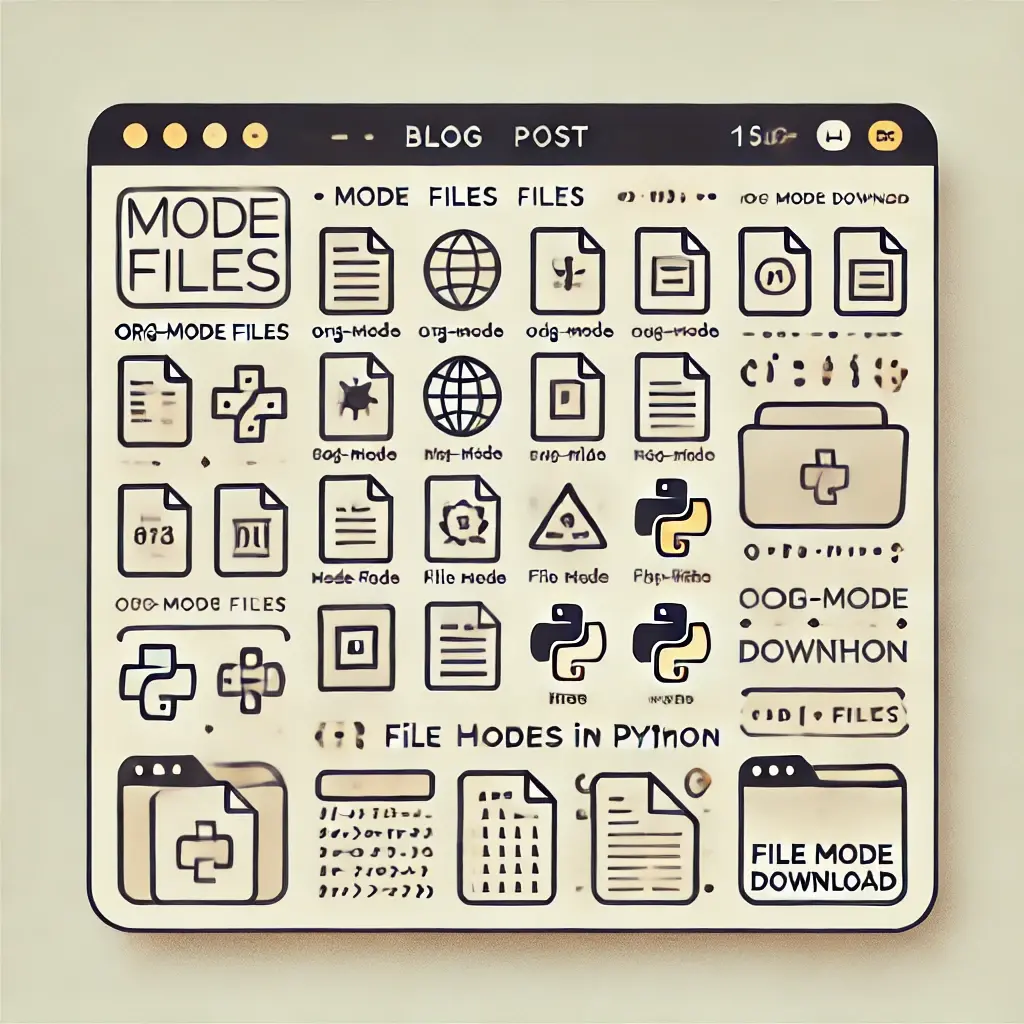
- Available on GitHub and other open-source repositories.
- Easily downloadable and installable.
- Compatible with popular editors like Emacs and Vim.
- Customizable to meet specific user needs.
Downloading the right Mode Files ensures that you have the optimal configuration for your tasks, enhancing productivity and ease of use.
FAQs
Q: What is the purpose of Org Mode Files?
A: Org Mode Files are used to organize notes, tasks, and projects in Emacs, providing a powerful tool for productivity.
Q: How can I download Mode Files?
A: Mode Files can be downloaded from open-source repositories like GitHub, often with specific instructions for installation.
Q: What are the main File Modes in Python?
A: Key File Modes in Python include ‘r’ for reading, ‘w’ for writing, ‘a’ for appending, and variations for binary file handling.
Q: Can Org-Mode Files integrate with other software?
A: Yes, Org-Mode Files can integrate with tools like Git and Markdown, enhancing their functionality and versatility.
Q: What happens if I use the wrong File Mode in Python?
A: Using the wrong File Mode can lead to errors, such as overwriting data or being unable to read a file properly.
Conclusion
Mode Files are integral to customizing and optimizing various technical environments, from organizational tools like Org Mode to programming languages like Python. By understanding and using these files effectively, users can significantly enhance their workflows and productivity. Whether you’re managing projects with Org Mode or handling data with Python, mastering Mode Files opens up a world of possibilities, making your tech journey smoother and more efficient.

